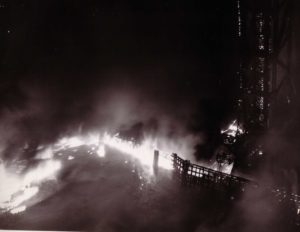This post is from one of our resourceful communications summer interns Alex Rivlin, who spotted this story and realized the connection to the work we do.
How polluted does water have to be to become flammable?
Bellandur Lake is just southeast of Bangalore, India. It is the largest lake there. The water in Bellandur Lake is so polluted that it does not even look like water. The top of the lake is covered with white, toxic foam, and the water below has turned black from the mass amounts of chemicals and sewage. The foam is evidently flammable, as it caught fire in May of 2015. The foam rose to twelve feet due to rain, and spilled onto the banks of the lake, destroying nearby wetlands and causing allergic reactions in some residents in the area.
Pollution’s destructive nature is not only prevalent in developing nations. In the U.S., the Cuyahoga River in Ohio famously caught fire in the late 1960s. Sewage from the city was pumped into the river, resulting in a brown color and common oil slicks. The water became sludge, and all the fish died as a result. People saw how destructive pollution can be, and knew that change was needed. The Cuyahoga River fire was the catalyst for the start of the environmental movement in the 1960s. It resulted in the creation of the Clean Water Act (1972), The Great Lakes Water Agreement, and the creation of the Environmental Protection Agency (EPA).

Other countries are affected by pollution, and now have to work on solving these issues like the U.S. did in the 1960s. There are ways of solving pollution-related issues, and they are very effective. Since 1988, the EPA has been working on cleaning and restoring the Cuyahoga River. After years of hard work, the Cuyahoga is on its way back to health. Bald Eagles finally returned to live there in 2006, and being at the top of the food chain, are eating fish in the river. With wildlife back, the Cuyahoga is one step closer to being free of pollution.
Pure Earth focuses on helping to clean up polluted areas in poor countries. We go to different sites around the world and implement projects to rid the communities of toxic pollution. Pollution affects us all, and we need to work together to reverse the damage caused by it.





